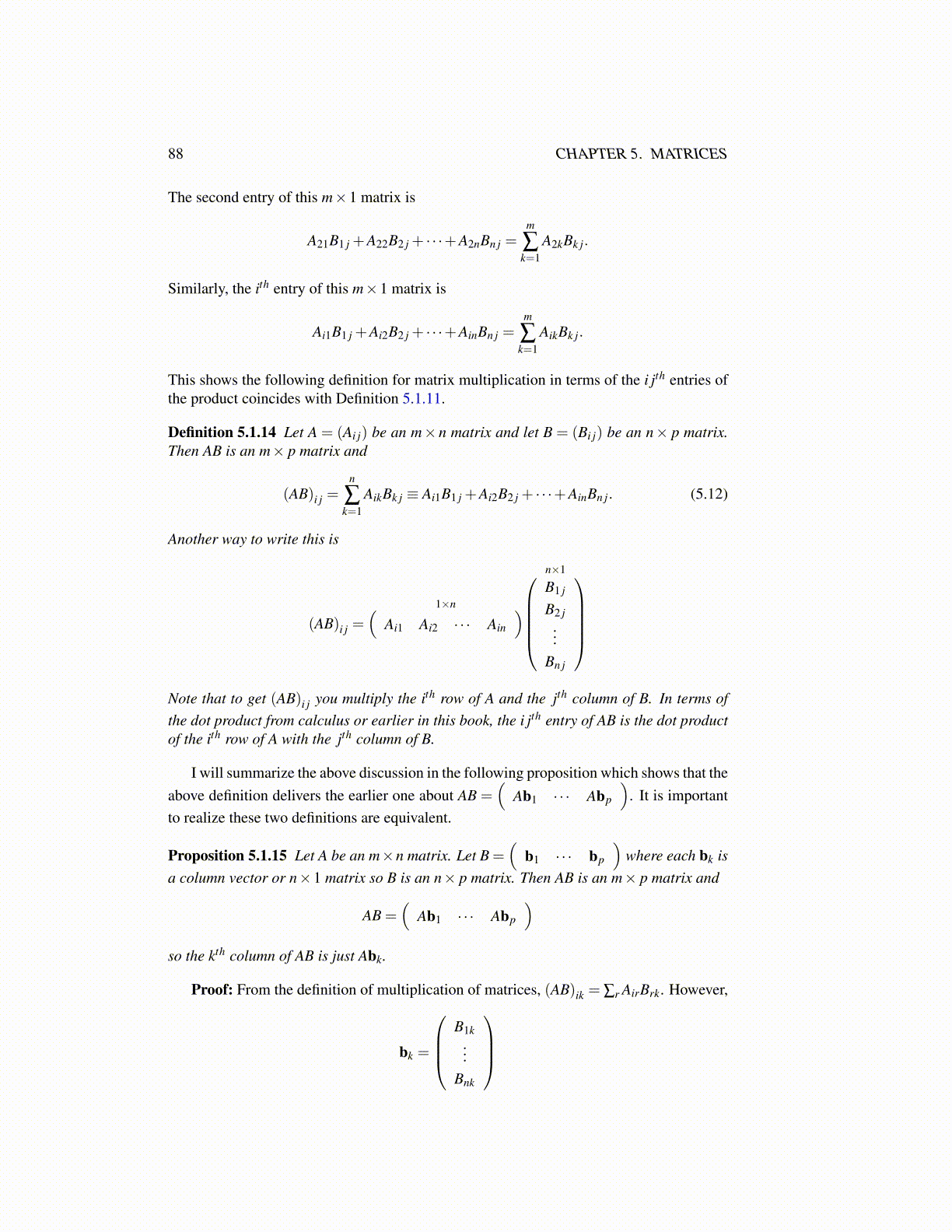
88 CHAPTER 5. MATRICES
The second entry of this m×1 matrix is
A21B1 j +A22B2 j + · · ·+A2nBn j =m
∑k=1
A2kBk j.
Similarly, the ith entry of this m×1 matrix is
Ai1B1 j +Ai2B2 j + · · ·+AinBn j =m
∑k=1
AikBk j.
This shows the following definition for matrix multiplication in terms of the i jth entries ofthe product coincides with Definition 5.1.11.
Definition 5.1.14 Let A = (Ai j) be an m×n matrix and let B = (Bi j) be an n× p matrix.Then AB is an m× p matrix and
(AB)i j =n
∑k=1
AikBk j ≡ Ai1B1 j +Ai2B2 j + · · ·+AinBn j. (5.12)
Another way to write this is
(AB)i j =
1×n(Ai1 Ai2 · · · Ain
)n×1B1 j
B2 j...
Bn j
Note that to get (AB)i j you multiply the ith row of A and the jth column of B. In terms ofthe dot product from calculus or earlier in this book, the i jth entry of AB is the dot productof the ith row of A with the jth column of B.
I will summarize the above discussion in the following proposition which shows that theabove definition delivers the earlier one about AB =
(Ab1 · · · Abp
). It is important
to realize these two definitions are equivalent.
Proposition 5.1.15 Let A be an m×n matrix. Let B =(
b1 · · · bp
)where each bk is
a column vector or n×1 matrix so B is an n× p matrix. Then AB is an m× p matrix and
AB =(
Ab1 · · · Abp
)so the kth column of AB is just Abk.
Proof: From the definition of multiplication of matrices, (AB)ik = ∑r AirBrk. However,
bk =
B1k
...Bnk